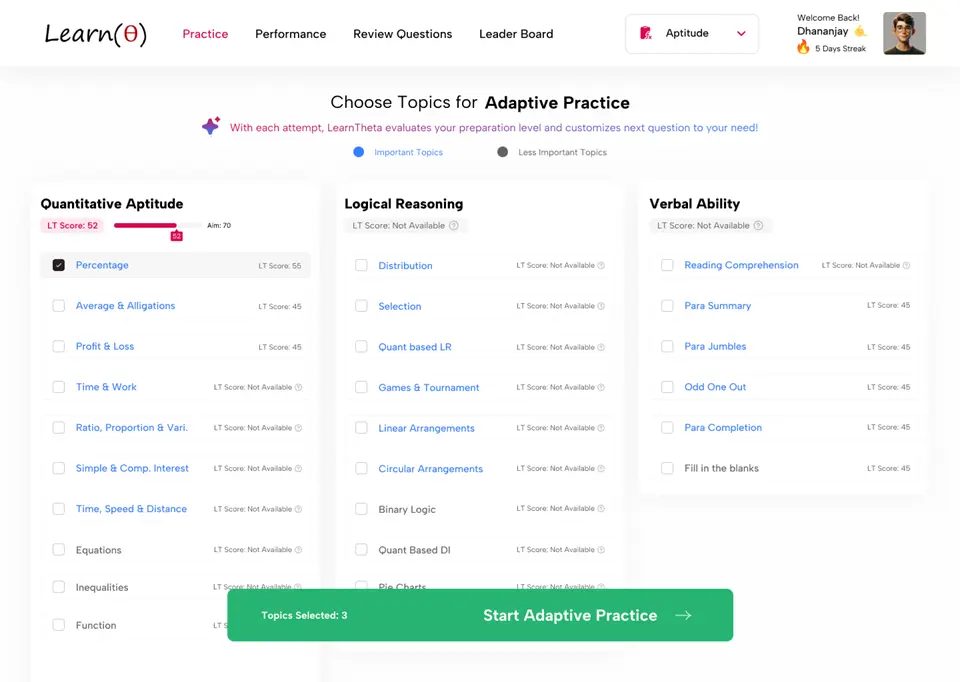Class 9 – Science Extra Questions – Ch. 6 – Tissues
Q. 1 Which of the following tissues contains proteins responsible for contraction?
Check Solution
Ans: C
Explanation: Muscle tissue is specialized for contraction and relaxation. This function is carried out by specific proteins within muscle cells, primarily actin and myosin, which interact to generate force and movement. Bones, blood, and cartilage are connective tissues with different primary functions and do not contain the proteins responsible for active contraction.
Correct Option: C
Q. 2 What are the cellular components that make up phloem tissue?
Check Solution
Ans: C
Explanation: Phloem is a vascular tissue in plants responsible for the transport of sugars produced during photosynthesis from the leaves to other parts of the plant where sugar is needed for growth or storage. The main cellular components of phloem are sieve tube elements (which form sieve tubes) and companion cells. Sieve tube elements are the primary conducting cells, while companion cells provide metabolic support to sieve tube elements. Therefore, both sieve tubes (formed by sieve tube elements) and companion cells are essential components of phloem tissue.
Correct Option: C
Q. 3 What type of tissue makes up the blubber of marine mammals like dolphins?
Check Solution
Ans: C
Explanation: Blubber is a thick layer of fat found under the skin of marine mammals. This fatty tissue serves as insulation to keep them warm in cold ocean waters, as an energy reserve, and as a buoyancy aid. Adipose tissue is the scientific term for fat tissue, composed of adipocytes (fat cells). Striated muscle tissue is found in skeletal muscles, epithelial tissue forms coverings and linings, and areolar connective tissue is a loose connective tissue found throughout the body. Therefore, adipose tissue is the correct answer.
Correct Option: C
Q. 4 Which of the following is the primary role of xylem in plant vascular tissue?
Check Solution
Ans: C
Explanation: Xylem is a plant vascular tissue responsible for the transport of water and dissolved minerals from the roots to the rest of the plant. Phloem, on the other hand, transports sugars produced during photosynthesis. Carbon dioxide is absorbed by leaves through stomata. While some plant cells can store food reserves, this is not the primary role of xylem.
Correct Option: C
Q. 5 What are the short, branched extensions projecting from a neuron’s cell body called?
Check Solution
Ans: A
Explanation: Neurons are nerve cells that transmit information throughout the body. They have a cell body (soma) which contains the nucleus, and extensions that carry signals. Dendrites are short, branched extensions that receive signals from other neurons. Axons are longer extensions that transmit signals away from the cell body. Neutrophils are a type of white blood cell. Boutons, also known as synaptic boutons or terminal boutons, are the swellings at the end of axons that release neurotransmitters. Therefore, the short, branched extensions projecting from a neuron’s cell body are called dendrites.
Correct Option: A
Q. 6 What are the primary mineral components found abundantly in bone matrix?
Check Solution
Ans: B
Explanation: Bone matrix is primarily composed of a mineralized connective tissue. The major mineral components are hydroxyapatite, a crystalline calcium phosphate. Therefore, calcium and phosphorus are the most abundant mineral components.
Correct Option: B
Q. 7 What is the name of the basic structural and functional component of a striated muscle cell?
Check Solution
Ans: B
Explanation: A sarcomere is the basic contractile unit of striated muscle. It is the repeating pattern of actin and myosin filaments that allows for muscle contraction. The sarcolemma is the cell membrane of a muscle cell, sarcoplasm is the cytoplasm, and myofibrils are bundles of contractile filaments within a muscle cell, but the sarcomere is the fundamental functional unit where the actual shortening occurs.
Correct Option: B
Q. 8 Which of the following plant tissues is characterized by thick, lignified cell walls and is primarily responsible for mechanical support, often lacking intercellular spaces?
Check Solution
Ans: C
Explanation: Sclerenchyma tissue is characterized by thick, lignified cell walls, which provide rigid mechanical support to the plant. These cells are often dead at maturity and typically lack intercellular spaces, contributing to their strength. Parenchyma cells are generally thin-walled and involved in photosynthesis and storage. Collenchyma cells have unevenly thickened primary cell walls and provide flexible support. The epidermis is the protective outer layer of the plant, and while it can contribute to support, its primary role is protection and it does not typically have the thick, lignified walls described.
Correct Option: C
Q. 9 What organic substance thickens the walls of cork cells, making them impermeable to water and gases
Check Solution
Ans: B
Explanation: Cork cells have thickened walls due to the presence of suberin, a waxy substance. Suberin is a complex biopolymer that is hydrophobic, meaning it repels water, and also makes the cell walls impermeable to gases. Pectin is a polysaccharide found in plant cell walls that contributes to their rigidity but is not the primary substance responsible for the impermeability of cork. Lignin is another component of plant cell walls, particularly in woody tissues, that provides strength and rigidity, but suberin is the characteristic substance in cork.
Correct Option: B
Q. 10 What plant tissue offers structural reinforcement and forms a protective layer on seeds?
Check Solution
Ans: D
Explanation: Sclerenchyma tissue provides significant structural support to plants and also forms the protective outer layer of seeds, known as the seed coat. Parenchyma is involved in photosynthesis and storage, collenchyma offers flexible support to growing parts, and aerenchyma is specialized for gas exchange in aquatic plants.
Correct Option: D
Prepare Science & Maths – with LearnTheta’s AI-Practice!

✅ All Topics at One Place

🤖 Adaptive Question Practice

📊 Progress and Insights